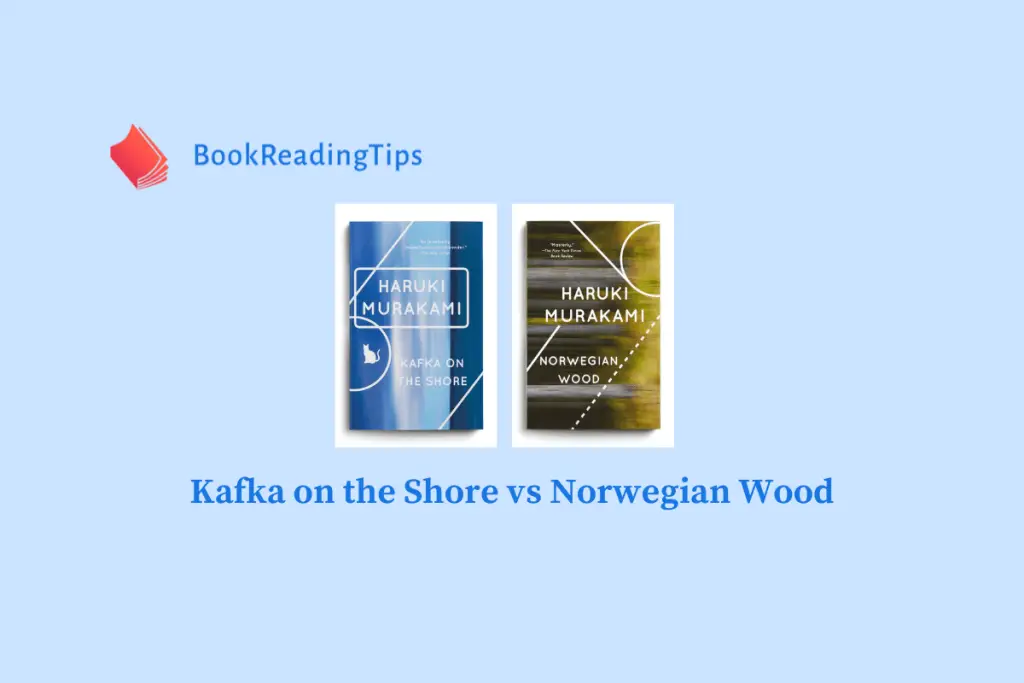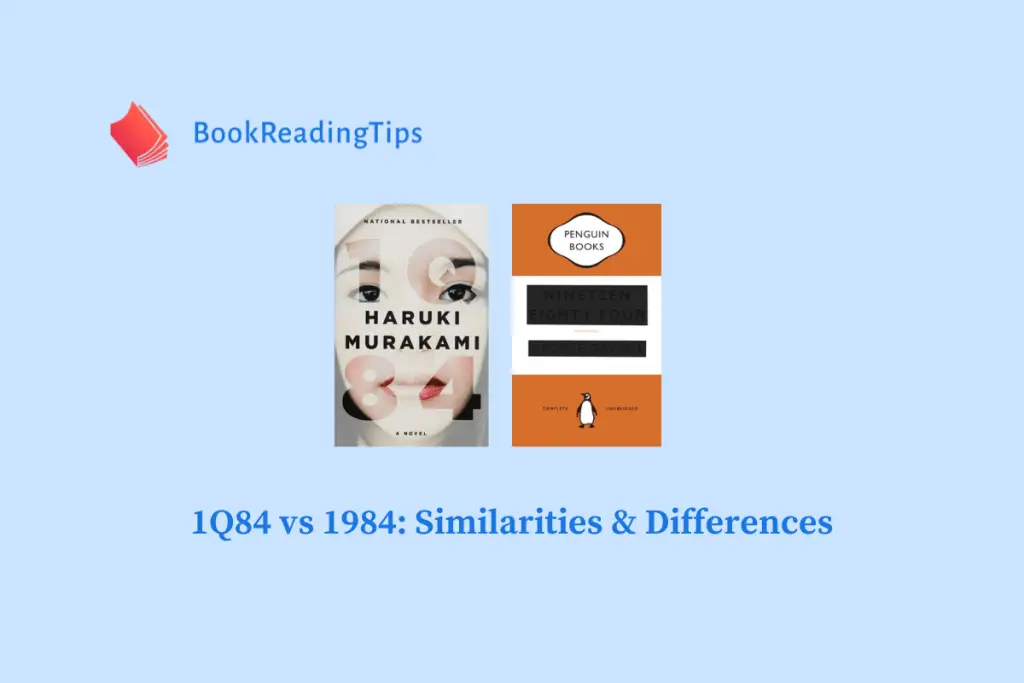Kafka on the Shore by Haruki Murakami has been a subject of debate and discussion since its publication. With its surreal elements and nuanced narrative, it leaves readers with varying interpretations of its themes and messages. One commonly explored question arises from the novel’s overall tone and atmosphere: Is Kafka on the Shore a depressing read?
For some readers, melancholic undertones seem to prevail throughout the story, primarily emanating from the protagonist’s emotional struggles and the novel’s often surreal and somber scenes. As you delve into one of Murakami’s longest books, you may find yourself grappling with the complexities of love, loneliness, and loss, as well as notions of fate and free will. The characters’ challenging quest for self-discovery often lends itself to moments of introspection and, at times, despondency.
Nevertheless, it is essential to remember that the novel’s impact is highly subjective. While some may find that Kafka on the Shore elicits feelings of sadness, others may perceive it as a thought-provoking and enlightening piece of literature that encourages personal growth and understanding. Ultimately, your interpretation of the novel’s emotional weight, or any of Murakami’s work, so to speak, will depend on your unique perspective and the connections you draw with the characters and their experiences.
Table of Contents
- Experiencing Kafka On The Shore
- Understanding the Theme of Depressiveness
- Finding Humor Amid Darkness
- Unraveling Reality & Fantasy
- Symbolism & Metaphor
- Unfolding Characters & Their Roles
- Contextualizing Within Murakami’s Other Works
- Conclusion
Experiencing Kafka On The Shore
When you immerse yourself in Kafka on the Shore by Haruki Murakami, a renowned Japanese author, you’ll find yourself exploring a world laced with magical realism and thought-provoking themes. As you read through the novel, allow yourself to consider whether you find the story to be predominantly depressing or not.
In Kafka on the Shore, Murakami’s narrative weaves a tale of two seemingly unrelated characters: Kafka, a teen runaway, and Nakata, a simple-minded older man. As the story unfolds, you will encounter various elements that might evoke a sense of melancholy, such as solitude, loss, and existential questions.
However, the novel also presents moments of uplift and hope, such as the resilience of the characters and their exploration of self-discovery, which may counterbalance the more somber aspects of the story. This balance showcases Murakami’s skill in expressing the complexity of the human experience, making the book a nuanced journey through life’s highs and lows.
Throughout your journey into the world of Kafka on the Shore, pay attention to the ways in which Murakami employs elements of Japanese culture and tradition. While some scenes may come across as strange or otherworldly to international readers, these elements are often grounded in Japanese folklore and history. By understanding these cultural influences, you can gain a richer and more well-rounded reading experience.
Remember, your experience reading Kafka on the Shore will be shaped by your unique perspective. Engaging with the novel, considering its themes and cultural context, and reflecting on your own emotional responses will help you determine whether you find the story mostly saddening or inspiring at its core.
Understanding the Theme of Depressiveness

In Kafka on the Shore, you can explore the multi-layered themes of depressiveness and how they intertwine with other elements in the book. The novel combines the realms of dreams and the unconscious, allowing you, as the reader, to deeper understand the characters’ emotions.
Throughout the book, there is an ever-present feeling of hope enmeshed with fate and prophecy. The presence of despondency is often counterbalanced by the element of humor, lighting the mood during darker moments. This delicate balance of emotions ensures that the story remains engaging while exploring deeper themes of human nature.
The aspect of suspense, particularly surrounding the mysterious Oedipal curse and the protagonist’s journey, adds elements of fear to the already complicated emotional landscape. At its core, Kafka on the Shore seems to ponder the beauty, sex, and intricacies of relationships, as well as the darker side of love and the psychological impact of an unresolved past.
The World Fantasy Award-winning work transports you through time travel and a magical underworld, broadening your perspective while challenging your understanding of plot and form. As you journey through this captivating story, you will discover a world where the Oedipus myth has been played out in a modern setting, allowing for fresh interpretations of an old theme.
It is the combination of these diverse elements that truly creates a unique reading experience. As you delve into the world of Kafka on the Shore, you may find both solace in the realm of dreams and darkness in the depths of the unconscious. The depressiveness is not a standalone theme—it is the intricate relationship between the novel’s myriad components that provides the full, nuanced understanding of this key topic.
Finding Humor Amid Darkness
While Kafka on the Shore may have some dark and depressing aspects, you can appreciate the way Haruki Murakami finds humor amidst tragedy. In his writing, you often see moments of levity and comic relief that encourage you to keep reading despite the dark undertones.
For example, there is an amusing scene involving a character drinking Diet Pepsi, which provides a moment of respite from the potentially heavier themes. Additionally, the author often incorporates everyday items, such as New Balance shoes, into his narratives. By doing so, he grounds his story in reality, making it more relatable and engaging for you, the reader.
Murakami’s use of humor extends beyond character interactions and pop culture references. He is known for his eccentric style that frequently subverts expectations. As you read, you might find yourself laughing at descriptions of bizarre occurrences or surreal scenarios that challenge traditional storytelling conventions.
Murakami also uses humor to examine and address deeper subjects, such as violence. He approaches these themes with a level of absurdity and irony, allowing you to reflect on their implications while still appreciating the lighter moments within the story.
In conclusion, your experience reading Kafka on the Shore doesn’t have to be strictly depressing. By paying attention to how the author injects humor into his writing, you can see that beneath the darkness lies a story that is as funny as it is thought-provoking.
Unraveling Reality & Fantasy
As you read Kafka on the Shore, you will find yourself diving deeper into the realms of both reality and fantasy. The novel explores these concepts through a dreamlike narrative, creating a world where the boundaries between the conscious and the subconscious are constantly blurred. The use of magical realism in the story adds another layer to this already complex tapestry of ideas.
In your journey through this novel, you may begin to notice the subtle ways in which fantasy and reality overlap and intertwine. Dreams, for example, play a significant role in the story, acting as conduits that allow the characters to access their inner consciousness and reveal hidden truths. These dream sequences often represent a metaphorical merging of the character’s internal and external worlds, leading to a shared reality that defies conventional logic.
The notion of magical realism further solidifies the sense of interconnectivity in the world of Kafka on the Shore. This literary style permits seemingly impossible events to unfold seamlessly within the narrative, blurring the lines between what is real and what is imagined. By embracing these mysterious occurrences and treating them as part of the every day, you are encouraged to reevaluate the nature of reality, thus making it difficult to distinguish between the fantastical elements and the mundane.
Throughout the novel, the contrast between reality and fantasy forces you to reassess your own beliefs and perceptions. As you follow the characters’ personal and emotional journeys, you will uncover the extent to which the subconscious can shape one’s understanding of the world. This reevaluation may lead to profound realizations about the interconnectedness of life and the power of the human mind.
In summary, Kafka on the Shore effectively weaves together the concepts of reality, fantasy, dreams, metaphor, consciousness, magical realism, and subconscious experiences to create an enigmatic yet captivating exploration of the human psyche. By immersing yourself in this vivid and thought-provoking world, you will be better equipped to unravel the intricate connections between our individual and shared realities.
Symbolism & Metaphor

In Kafka on the Shore, you’ll notice that Murakami employs numerous symbols and metaphors to convey his themes and messages. Music, for instance, plays an essential role in the novel as a connecting thread between the characters and their emotions. Jazz and classical music are referenced, symbolizing the journey and love interests of the protagonist, Kafka Tamura.
The talking cats in the story serve as a bridge between the world of the ordinary and the extraordinary. They are instrumental in making protagonist Satoru Nakata understand his ability to communicate across realms. Similarly, the boy named Crow is a metaphysical representation of Kafka’s inner self, guiding his journey through life.
You’ll find that the labyrinth is another recurring symbol throughout the novel. This intricate maze signifies the complex nature of human existence. In exploring the labyrinth, characters like Satoru Nakata and Kafka Tamura delve into the depths of their own minds, also representing the intertwined paths of their lives.
Moreover, you’ll see a strong connection between the story and its numerous cultural references. Murakami incorporates works such as Franz Kafka’s literature, David Lynch’s films, and Richard Francis Burton’s translation of “One Thousand and One Nights.” These references not only add richness to the text but also highlight the cross-cultural significance of the novel.
Literature and language are pivotal elements in the story as well. The private library, for example, symbolizes the world of knowledge, refuge, and personal growth for the characters. As you read, you might also notice that the characters’ conversations are often about literature or history, which serves as a subtle reminder of one’s past and identity.
Furthermore, concepts like death, murder, and World War II are embedded within the novel’s plot. These darker undertones highlight the historical complexities that shape the characters’ lives and the world around them. It is through these grisly themes that the reader is encouraged to reflect on the impact of history and war on individuals and society.
In conclusion, Kafka on the Shore is rich with symbols and metaphors that delve into themes of life, love, and loss. As you read this deeply layered work, you’ll appreciate the subtleties and complexities Murakami has crafted, making the reading experience engaging and thought-provoking.
Unfolding Characters & Their Roles
As you delve into Kafka on the Shore, you’ll notice that Haruki Murakami intricately weaves an array of characters, each playing a significant role in shaping the overall mood of the story. Let’s explore some of these characters and their contributions to the narrative.
Nakata, an elderly, simple-minded man with the unusual ability to talk to cats, serves as a striking contrast to the novel’s other protagonist, Kafka Tamura. While Nakata’s backstory is rather tragic due to the loss of his memory and mental faculties, his humility and innate wisdom bring a sense of calmness to the story, counterbalancing some of the more unsettling events that occur throughout the novel.
Hoshino, a young truck driver who becomes Nakata’s companion, adds another layer of depth to the narrative. He acts as a guide for Nakata, assisting him in the larger events of the storyline, such as confronting Johnnie Walker and Colonel Sanders. This relationship showcases the impact of chance encounters and personal growth.
Johnnie Walker and Colonel Sanders both blur the lines between reality and the metaphysical world. These supernatural entities force the characters to challenge their beliefs and traverse the edges of their understanding. Johnnie Walker, with his malevolence and grotesque actions, heightens the sense of dread, while Colonel Sanders, a Shinto spirit, provides much-needed guidance and support to Nakata and Hoshino.
In contrast, Sakura represents the beacon of hope and support for Kafka as he navigates through the seemingly bleak landscape of the story. She offers a sense of belonging and stability. The reference to a UFO sighting in Kōchi Prefecture adds an element of mystery to the story, creating a backdrop that keeps you questioning whether certain events are reality or simply imagined.
Another theme that emerges throughout the novel is the concept of youth and its shadows. This is particularly noticeable in the story’s central characters, Kafka and Nakata. Their personal journeys, filled with growth, self-discovery, and grappling with the past, evoke a feeling of melancholy that may contribute to the perceived depressing nature of the story.
The inclusion of real-life figures, like Laura Miller and Natsume Sōseki, helps ground the novel in reality, despite its surreal and fantastical elements, allowing you to better relate to the narrative. Similarly, the use of classical music, such as Beethoven’s compositions, and the influence of Shinto beliefs provide an enriching context to the plot, helping you to understand the underlying themes and motivations of the characters.
So, as you immerse yourself in Kafka on the Shore, pay close attention to the complex web of characters and their roles. Each of them contributes in unique ways, some bringing moments of respite or moments of despair. It is the interplay between these characters, their individual paths, and the fascinating combination of reality and fantasy that makes this novel a compelling exploration of the human experience.
Contextualizing Within Murakami’s Other Works
When comparing Kafka on the Shore to some of Murakami’s other works, such as Norwegian Wood and The Wind-Up Bird Chronicle, you’ll notice certain similarities in themes and writing style. The author often delves into the nature of the human psyche, emphasizing the importance of loss, love, and self-discovery.
Norwegian Wood, like Kafka on the Shore, can be classified as a bildungsroman, chronicling the protagonist’s journey towards self-discovery and emotional development. Both works explore the transformation of the main characters as they navigate through the complexities of their relationships.
In The Wind-Up Bird Chronicle, you can appreciate Murakami’s trademark blend of reality and fantasy. Like Kafka on the Shore, the protagonist interacts with the mystical aspects of the world, making storytelling an essential tool for their introspection.
Murakami’s writing style is characterized by a confident, knowledgeable, and neutral tone. He boldly tackles themes of loss and love while maintaining a sense of clarity that helps you navigate the intricate narrative structures of his novels.
Commercial culture is another element present in Murakami’s works. The author often embeds his stories with recognizable aspects of American fiction and references to contemporary commercial culture, giving resonance and familiarity to his novels.
While symbolism varies in each Murakami work, one common thread is the use of blood as a symbol of deep emotional and psychological connections. This can be seen in both Kafka on the Shore and The Wind-Up Bird Chronicle, where blood represents a powerful force tying characters together.
By observing the connections between Kafka on the Shore and other Murakami creations, you can better understand the elements that define the author’s storytelling and writing style. This contextualization helps frame your interpretation of the novel, providing new perspectives on whether Kafka on the Shore might be considered depressing or not.
Another Murakami novel, 1Q84 has the same surreal and magical realism style, blurring the lines between reality and fantasy. Both Kafka and 1Q84 explore themes of identity, loneliness, and the search for meaning in life. Both novels also feature complex characters and intertwining storylines, immersing readers in a thought-provoking and enigmatic journey.
Conclusion
In reading Kafka on the Shore, you will undoubtedly encounter elements of metaphysics and surrealism. This novel is known for its intricate web of tangential storylines and complex themes. You can appreciate the wealth of ideas that Haruki Murakami presents in this work, touching on responsibility, existentialism, and even the role of National Public Radio (NPR) in anchoring us to reality.
As you delve into the novel, you may find that the surrealistic aspects challenge your everyday perceptions and understanding of the world. This distinct characteristic of Murakami’s writing pushes you to explore the depths of your own responsibility for your actions and the trajectory of your life.
While Kafka on the Shore may be a challenging read for some, you can take away valuable insights from the novel that enrich your perspective on life and the human experience. The novel may seem melancholic at first, but it invites you to ponder essential questions about the nature of existence, and in doing so, it opens the door to a world of rich, engaging literary appreciation.
In conclusion, whether or not you find Kafka on the Shore depressing is up to your interpretation. It offers a confident and knowledgeable perspective on various concepts, navigating the complexities with clear and neutral language. Ultimately, your own sensitivities and understanding of the themes presented in the book will shape your experience and emotions while reading.




